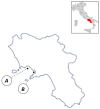Metal Concentration in Muscle and Digestive Gland of Common Octopus (Octopus vulgaris) from Two Coastal Site in Southern Tyrrhenian Sea (Italy)
- PMID: 31261856
- PMCID: PMC6651072
- DOI: 10.3390/molecules24132401
Metal Concentration in Muscle and Digestive Gland of Common Octopus (Octopus vulgaris) from Two Coastal Site in Southern Tyrrhenian Sea (Italy)
Abstract
Octopus vulgaris constitute an important part of most suitable marine resources for human consumption, however, they can represent a source in chemical contaminants intake such as heavy metals. In this scenario, the aim of the study was the evaluation of the concentration of lead (Pb), cadmium (Cd) and mercury (Hg) in the muscle and digestive gland of octopus caught from two different locations along Campania coast (Castellammare di Stabia and Napoli) and the estimation of their weekly human intake derived from the ingestion of octopus. Analysing 38 samples showed a higher concentration of Pb in the muscle of octopus in Castellammare di Stabia than in Napoli. No statistical differences were reported for Cd, Pb and Hg concentrations in the digestive gland of octopus between two sampling sites. Differences were observed between the two tissue types, with a higher level of Cd and Pb observed in the digestive gland compared with the muscle. Noteworthy, the consumption of muscle from Castellammare di Stabia could increase Pb intake in heavy consumers of local octopus. In conclusion, the present work determines that it is important to improve strategies to minimize environmental pollution sources in these areas.
Keywords: cadmium; cephalopods; lead; mercury.
Conflict of interest statement
The authors declare no conflict of interest.
Figures



References
-
- Food and Agriculture Organization of the United Nations The State of World Fisheries and Aquaculture. [(accessed on 28 June 2019)];2018 Available online: http://www.fao.org/3/i9540en/i9540en.pdf.
-
- ISMEA Rete di Rilevazione dei Mercati Ittici. [(accessed on 23 September 2016)];2016 Available online: http://archivio.ismea.it/ReportIsmea/Filiera_pesca_2016.pdf.
MeSH terms
Substances
LinkOut - more resources
Full Text Sources

